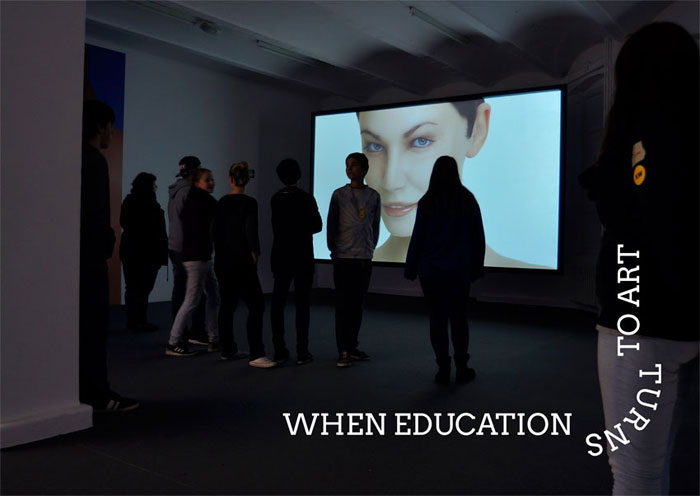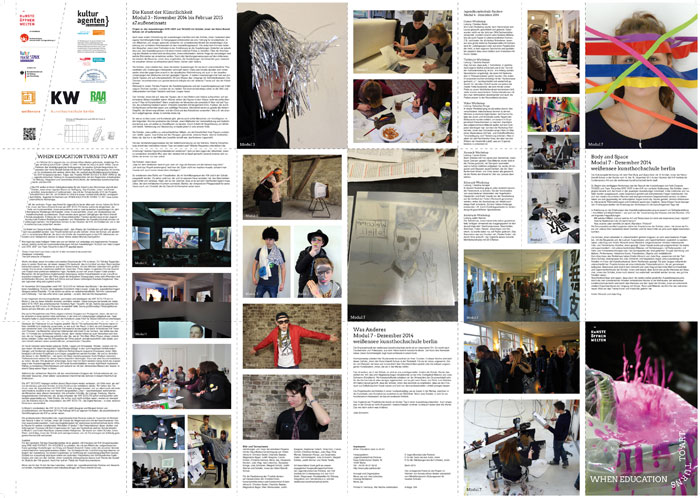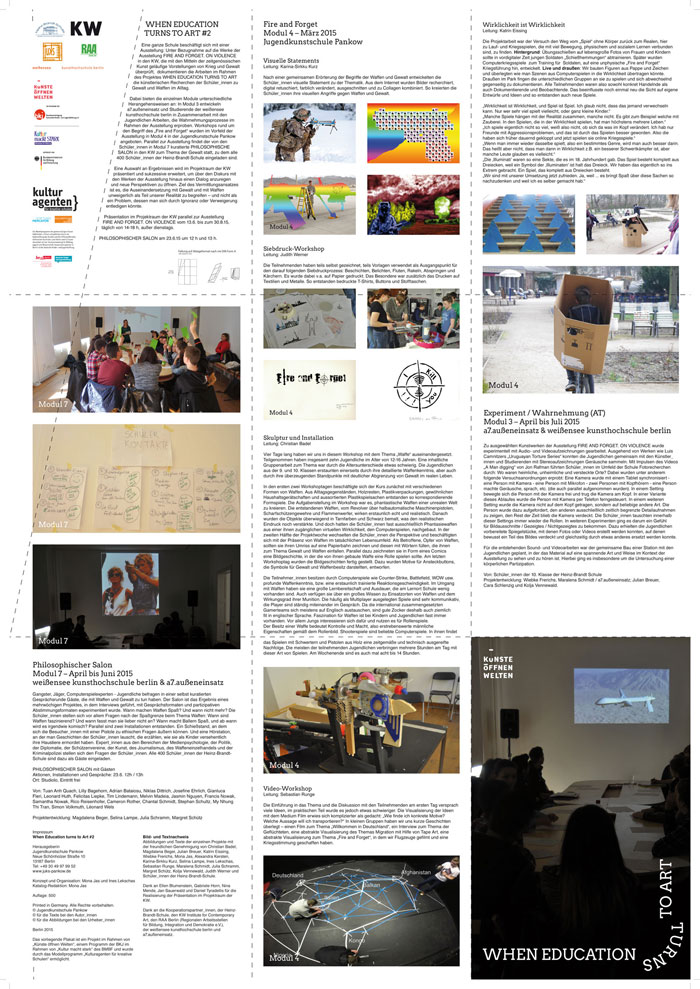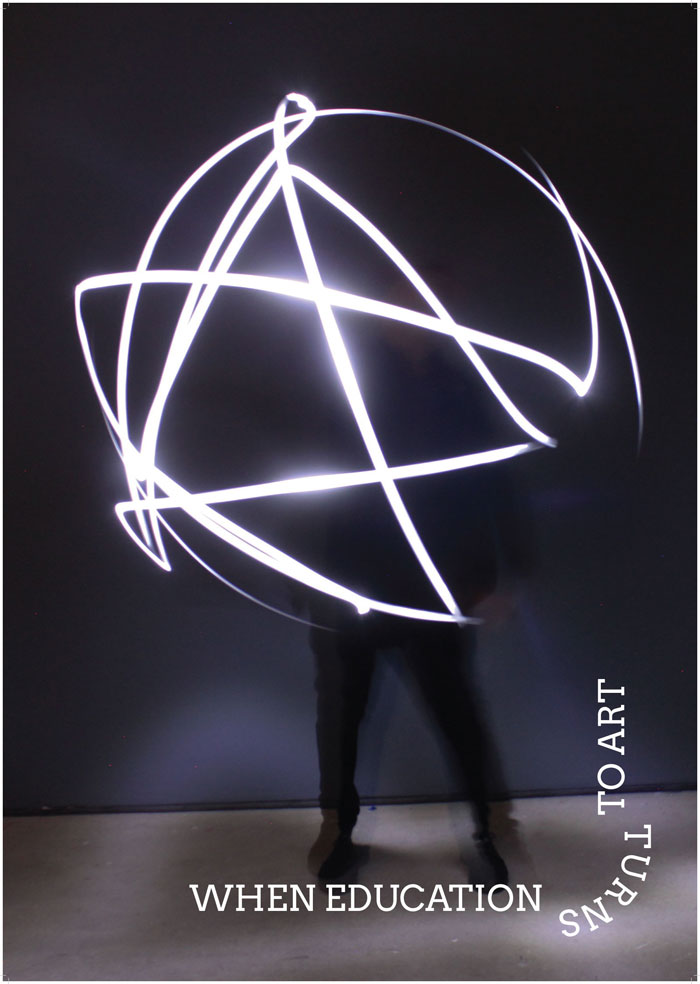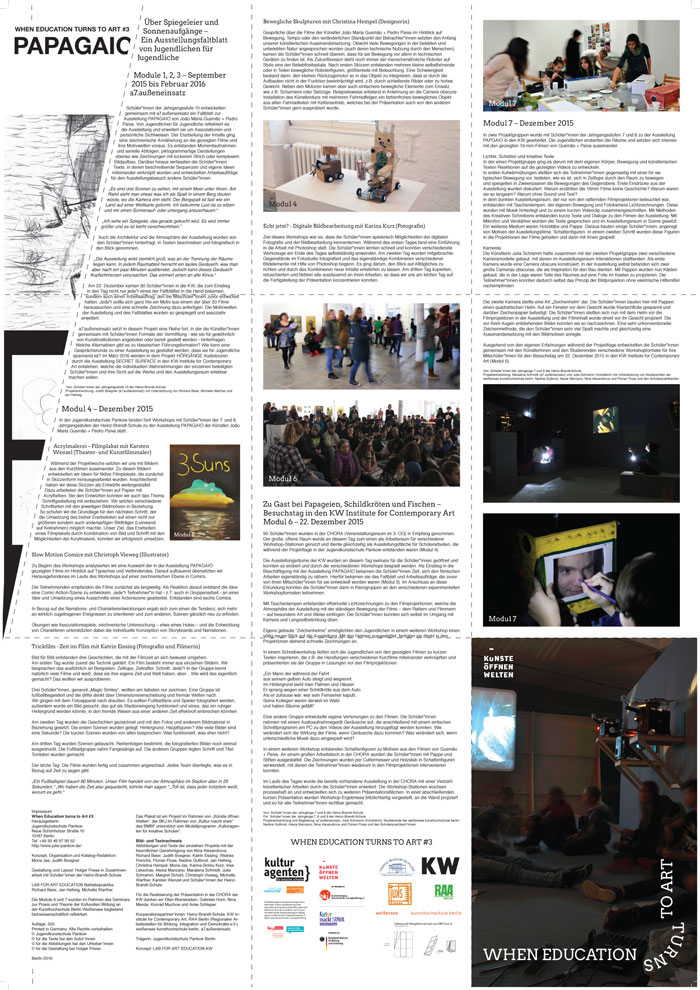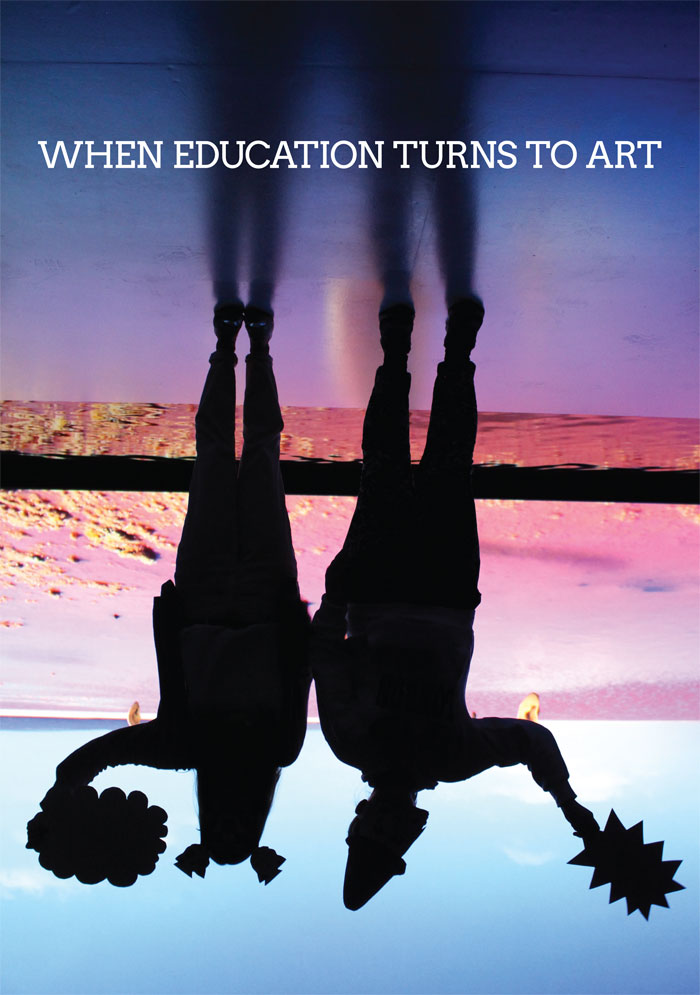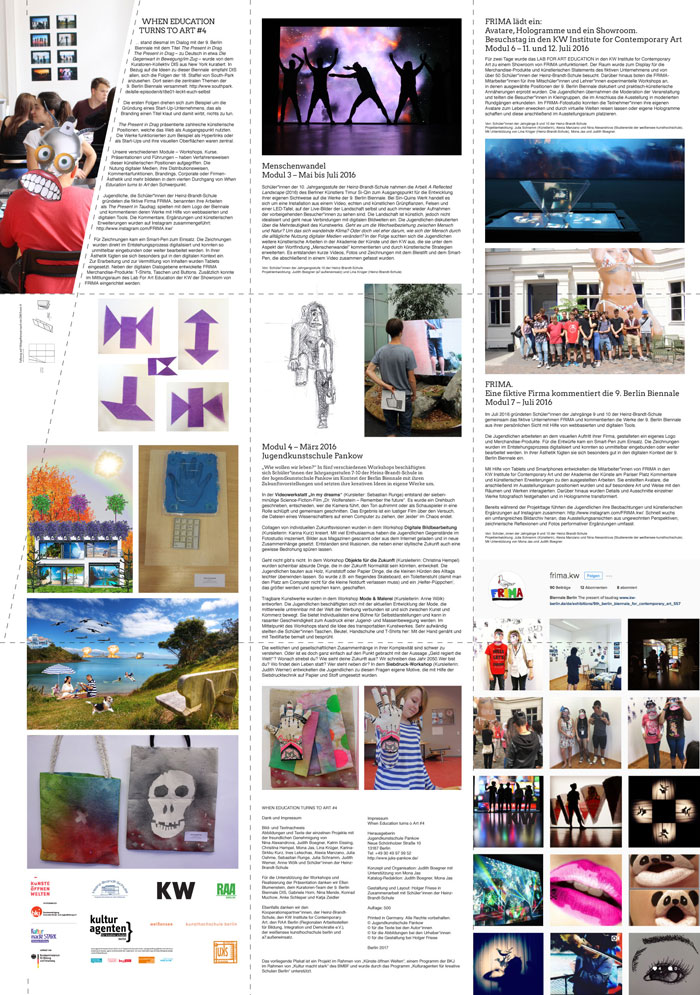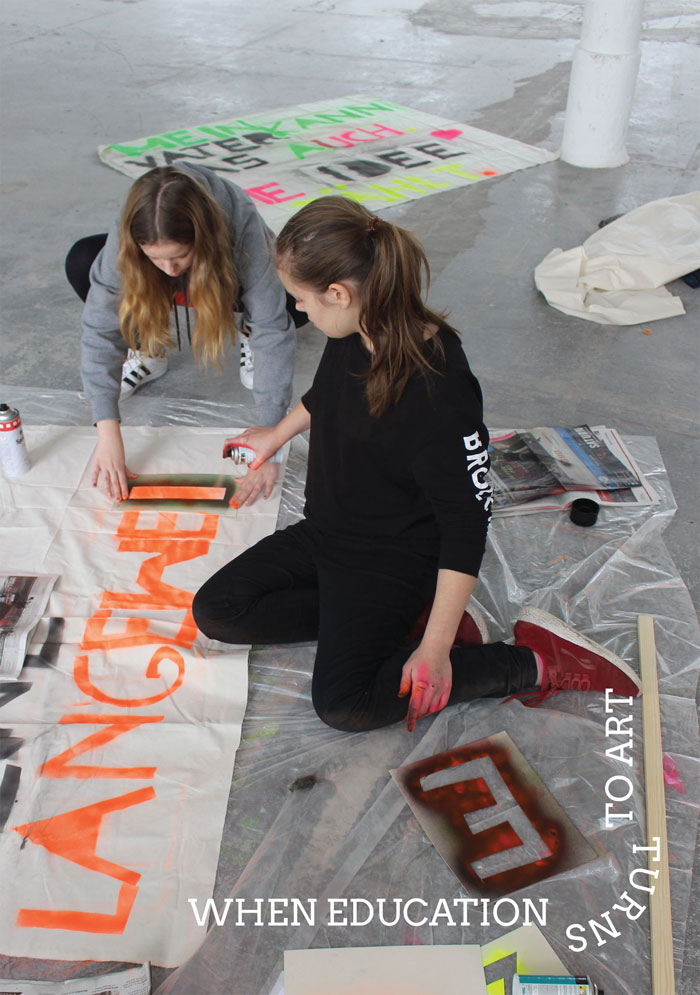When Education turns to Art
The three-year project started in October 2014 in collaboration with cultural institutions, a school, an art academy and a socio-political association. The curatorial concepts and programs of the KW Institute for Contemporary Art were artistically explored by young people, students and artists. The art institution KW provided space for the workshops within their building complex.
These formed the basis for workshops that were then offered to entire classes of the Heinz Brandt School in the exhibition rooms and at the youth art school Pankow. Asked about the significance and meaning of art for young people
today, the participants themselves switched to the roles of art educators and mediators. They developed ideas and concepts that were inspired by KW’s ongoing exhibitions. These formed the basis for workshops, which were then offered in the exhibition rooms and in the youth art school Pankow whole classes of the Heinz-Brandt-School. Workshops of the Kunsthochschule Weißensee were included, especially silk screen printing and gravure printing techniques were used.
The results were presented in the KW, in the school club and at the art academy. The project was addressed to all students of the Heinz-Brandt-School. Various modules connected through the content of the exhibitions at KW formed the overall structure of When Education into Art. In this way, seven modules were run at intervals of six months each.
The project addressed all students of the Heinz-Brandt-School. It was subdivided into different modules, which were connected by the contents of the exhibitions in the KW. At intervals of six months, seven modules each were carried out in this way.
During the encounters with the various groups of the school in KW’s showroom, we sometimes experienced the loss of “traditional” visitors – overwhelmed by impressions. At the same time, the young people reluctantly left exhibitions – like Ryan Trecartin’s. “I feel like the camera,” a teenager * described her impression of Trecartin’s installation SITE VISIT. Many details that were not previously visible could be revealed through artistic work with adolescents and students.
The artistic works, which in some cases came along with high content requirements, could be made comprehensible to other visitors at a further level through artistic interpretations of the young people and pupils. The cooperation of the Academy of Arts, the School and cultural institutions has created an experimental space of “in between”. At the university, the project enabled a combination of practical experience and theoretical work. This experience has helped artists to make more conscious decisions for or against different fields of action and to discover “the museum” as an important place of artistic work. In terms of content, the projects intervened in complex artistic discussions and artistic structures. By positioning them in a relatively protected space and supported by both systems (university and school), projects of this kind enable process-oriented cooperation beyond legitimacy discourses.
Heinz-Brandt-School, Pankow Youth Art School, KW Institute for Contemporary Art, RAA Berlin (Regional Employment, Integration and Democracy, ass.), art academy weissensee kunsthochschule berlin.
Supported by Künste öffnen Welten, a Programm of Bundesvereinigung Kulturelle Kinder- und Jugendbildung (BKJ) within the framework of Kultur macht stark / BMBF.
Head and Promoter: Ines Lekschas, Alexandra Kersten
Collaboration: Magdalena Beger, Lina Falkner, Alexia Manzano, Julia Schramm, Tosca Wyss, Artists working with Youth Art School Pankow, a7 außeneinsatz
Artistic Director: Mona Jas
